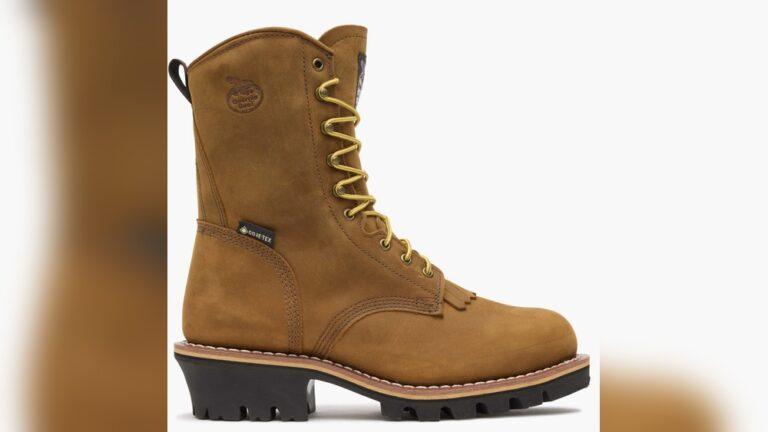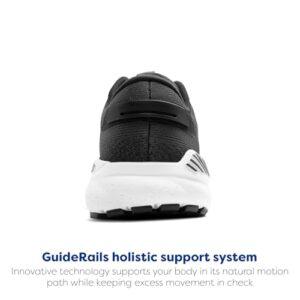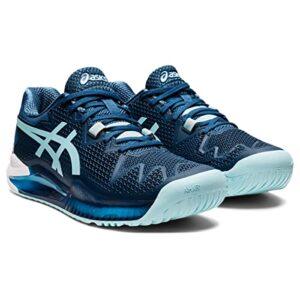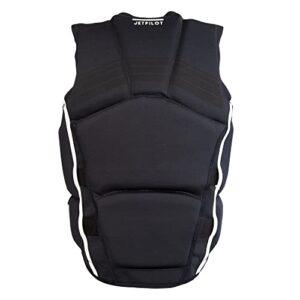When it comes to keeping your feet warm in cold weather, the insulation in your boots plays a crucial role. You might have heard about 400G insulation and wondered, “Is 400G insulation good for boots?” The answer isn’t one-size-fits-all.
Your comfort depends on how cold it gets, how active you are, and what you need from your boots. You’ll discover what 400G insulation means, how it compares to other insulation levels, and whether it’s the right choice for your outdoor adventures or daily winter wear.
Keep reading to find out how to keep your feet cozy without overheating or freezing.

Credit: rockyboots.com
Insulation Basics
Understanding insulation is key to choosing the right boots for cold weather. Insulation helps keep feet warm by trapping body heat inside the boot. Different amounts and types of insulation provide different levels of warmth. Knowing what 400G insulation means and how it affects boot performance can help you make a smart choice.
What 400g Means
400G refers to the weight of insulation in grams per square meter. It measures how much insulating material is inside the boot. A higher gram value usually means more insulation and more warmth. For example, 400G is a mid-level insulation amount. It offers good warmth without making boots too bulky.
Insulation Weight And Warmth
The weight of insulation directly affects how warm your boots will be. More grams mean better heat retention. 400G insulation is suitable for cold but not extreme cold conditions. It works well for daily winter wear or moderate outdoor activities. If you need boots for very cold weather, you might want more insulation.
How Insulation Affects Boot Performance
Insulation impacts comfort and mobility. Boots with 400G insulation stay warm while still allowing movement. They are not too heavy or stiff. This makes them ideal for hiking, walking, or working outdoors. The right insulation balances warmth with flexibility and breathability.

Credit: rockyboots.com
Warmth Levels For Activities
Warmth levels in boots depend on the insulation thickness and your activity type. The 400G insulation offers a solid balance of warmth for many outdoor activities. Understanding how it performs in different activity scenarios helps you pick the right boots.
Your body generates more heat during movement. Less activity means you need more insulation. Below are warmth levels for low, moderate, and high activity situations with 400G insulation boots.
Low Activity Scenarios
In low activity situations, your feet stay still for long periods. Examples include sitting by a fire or standing at a work site. 400G insulation provides decent warmth but may not be enough in extreme cold. Consider extra socks or heated insoles for very cold conditions.
Moderate Activity Scenarios
Moderate activities like hiking or walking keep your blood flowing steadily. 400G insulation works well here to maintain comfort and warmth. It prevents your feet from getting cold without causing overheating. Ideal for full days outdoors in cool to cold weather.
High Activity Scenarios
High activity means intense movement like running or climbing. Your body produces plenty of heat and sweat. 400G insulation might feel too warm and cause moisture build-up. Boots with lighter insulation or breathability features suit these activities better.
Comparing 400g To Other Insulations
Understanding how 400G insulation compares to other insulation levels helps you choose the right boots. Insulation weight is measured in grams per square meter (g/m²). This number shows how much warmth the boots can provide. Different insulation weights suit different temperatures and activities. Let’s explore how 400G stands against lighter and heavier insulation options.
200g And 300g Insulation
200G and 300G insulation are lighter options. They work well for mild to moderate cold. These insulations suit people who stay active outdoors. Hiking or walking in cool weather fits these levels. Boots with 200G or 300G insulation are usually less bulky. They allow better breathability and flexibility. However, they may not keep feet warm in very cold conditions.
600g And Above
Insulation levels of 600G and above offer heavy-duty warmth. These boots are for very cold or freezing weather. They suit low activity or still conditions. People with poor circulation may prefer this level. Boots with heavy insulation often feel bulkier. They may reduce flexibility and breathability. These boots are best for extreme cold or long exposure outdoors.
Pros And Cons Of Each Level
200G and 300G insulation pros: lightweight, flexible, good for active use. Cons: less warmth in freezing temperatures.
400G insulation pros: balanced warmth, suitable for moderate to cold weather, good for moderate activity. Cons: may feel warm in mild weather.
600G and above pros: excellent warmth in extreme cold, ideal for low activity. Cons: heavier, less flexible, may cause sweating.
Factors Influencing Insulation Choice
Choosing the right insulation for boots depends on several important factors. Insulation like 400G offers warmth, but it may not suit every situation. Understanding these factors helps pick boots that keep feet comfortable and protected.
Personal Warmth Needs
People feel cold differently. Some need more insulation to stay warm. If feet get cold easily, thicker insulation helps. Active people may need less because movement creates heat. Consider your body and how cold your feet usually get.
Boot Features Impacting Warmth
Insulation is not the only warmth factor. Boot materials also matter. Waterproof boots keep moisture out, preventing cold feet. Breathable boots stop sweat build-up, which can cause chills. Good traction helps with safety on ice and snow. All these features combine with insulation to keep feet warm.
Climate And Terrain Considerations
Climate affects how much insulation is needed. Cold, dry places often need thicker insulation. Wet or milder climates may require less. Terrain also plays a role. Hiking on rough, snowy ground demands better protection. Flat, urban areas might need lighter insulation. Match insulation to where you plan to use the boots.
Testing 400g Insulated Boots
Testing 400G insulated boots reveals how well they perform in cold conditions. This insulation level is measured by grams per square meter, indicating thickness and warmth. The tests focus on real-life use, checking warmth, comfort, and durability. Understanding these factors helps decide if 400G insulation suits your needs.
Performance In Cold Weather
400G insulation offers solid warmth for cold weather activities. It keeps feet warm in temperatures just below freezing. The boots perform best during moderate activity, like walking or hiking. They trap heat well but may feel less warm in extreme cold. This insulation suits those active outdoors but not in harsh arctic conditions.
Comfort And Fit
Boots with 400G insulation remain lightweight and flexible. They do not feel bulky despite thick insulation. The fit stays snug, allowing natural foot movement. Breathable linings prevent overheating inside the boot. Comfortable padding and insulation provide a soft feel against the skin. This balance helps users stay cozy without sacrificing ease of movement.
Durability And Moisture Control
400G insulated boots handle moisture well during use. Waterproof membranes protect feet from wet snow and slush. The insulation maintains its loft even after repeated exposure to moisture. Durable outer materials resist wear from rough terrain. Moisture-wicking liners keep feet dry, reducing the risk of cold feet. These boots hold up well in winter conditions.
Recommendations For Different Users
Different users need different levels of insulation in their boots. The choice depends on activity, climate, and personal health. 400G insulation offers a strong warmth level suitable for some, but not all. Below are recommendations for specific groups.
Hikers And Outdoor Workers
400G insulation works well for hikers and outdoor workers. It keeps feet warm during moderate to cold weather. This level supports active movement without causing overheating. Boots with 400G insulation also handle long days outside. Choose boots with good waterproofing and grip for safety.
Casual Users In Cold Climates
Casual users in cold climates can benefit from 400G insulation. It protects feet during daily walks or errands. The warmth is enough for temperatures just below freezing. For very cold places, more insulation might be needed. Look for boots that balance warmth and comfort.
People With Poor Circulation
People with poor circulation should consider 400G insulation carefully. It provides extra warmth for feet that get cold easily. This insulation level helps maintain foot temperature during low activity. However, boots should also fit well and avoid tightness. Proper fit improves blood flow and comfort.
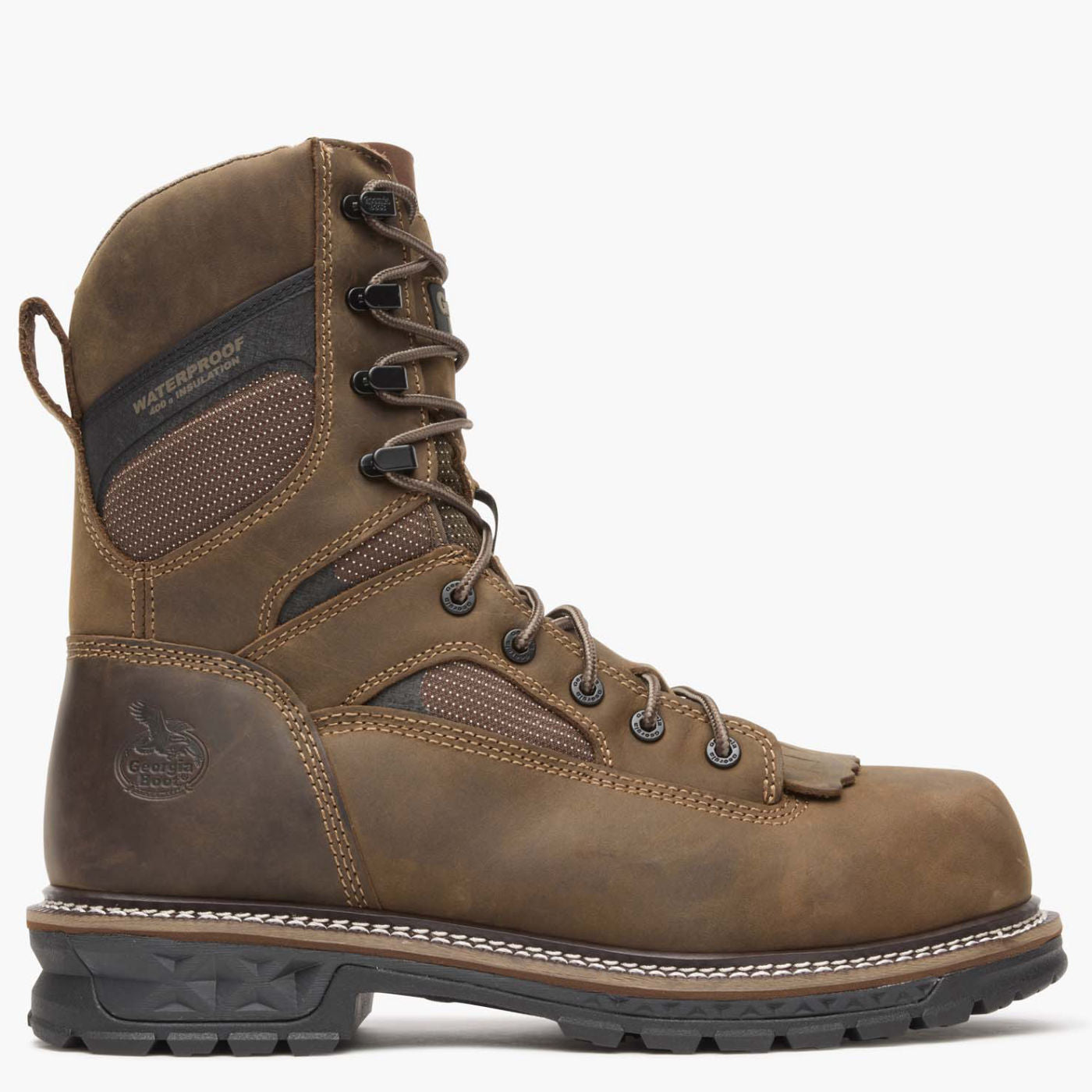
Credit: georgiaboot.com
Frequently Asked Questions
How Much Insulation Do I Need For Boots?
Choose boot insulation based on activity and temperature. For moderate cold and active use, 200-400 grams of insulation works well. Less insulation suits mild conditions; more is needed for extreme cold or low activity. Consider waterproofing and breathability for best comfort.
How Warm Is 400g?
400g insulation provides substantial warmth for moderate cold and active winter use, ideal for hiking or working outdoors. It suits people with poor circulation and cooler weather conditions. This level balances insulation thickness and breathability, keeping feet warm during consistent movement in cold environments.
What Is 400g Of Thinsulate Good For?
400g of Thinsulate provides substantial warmth for moderate cold and active winter use. It suits hiking, walking, and hunting. This insulation level keeps feet warm during consistent movement and helps those with poor circulation stay comfortable outdoors. It balances warmth with breathability and durability.
What Does Insulated 400g Mean?
Insulated 400g means the product contains 400 grams of insulation per square meter. It provides warmth for moderate cold and active use. This level suits activities like hiking or working outdoors in winter, offering balanced warmth without excessive bulk.
Conclusion
Choosing 400G insulation for boots suits many winter activities well. It keeps feet warm during moderate cold and steady movement. This insulation level balances warmth without causing overheating. People with poor circulation also benefit from its extra warmth. Remember to consider other boot features like waterproofing and traction.
Everyone’s warmth needs differ, so assess your comfort first. Overall, 400G insulation offers reliable warmth for most cold-weather uses. It’s a solid choice for outdoor enthusiasts and workers alike.

Madison Clark is a footwear expert and the voice behind MyStyleGrid.com. She specializes in honest shoe reviews, style tips, and practical guides to help readers find the perfect pair for any occasion. With years of experience in blogging and content creation, Madison makes footwear knowledge simple, stylish, and easy to follow.

